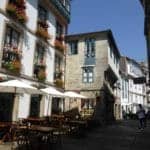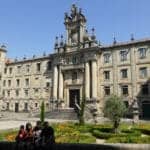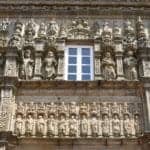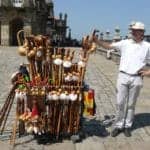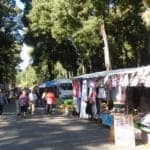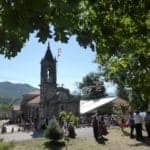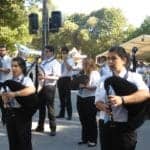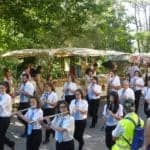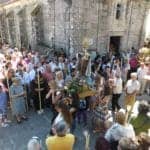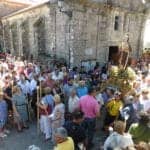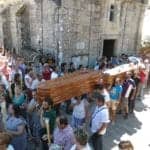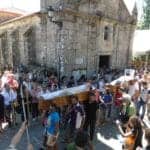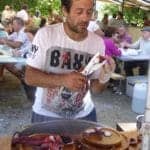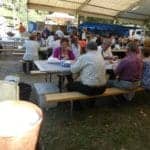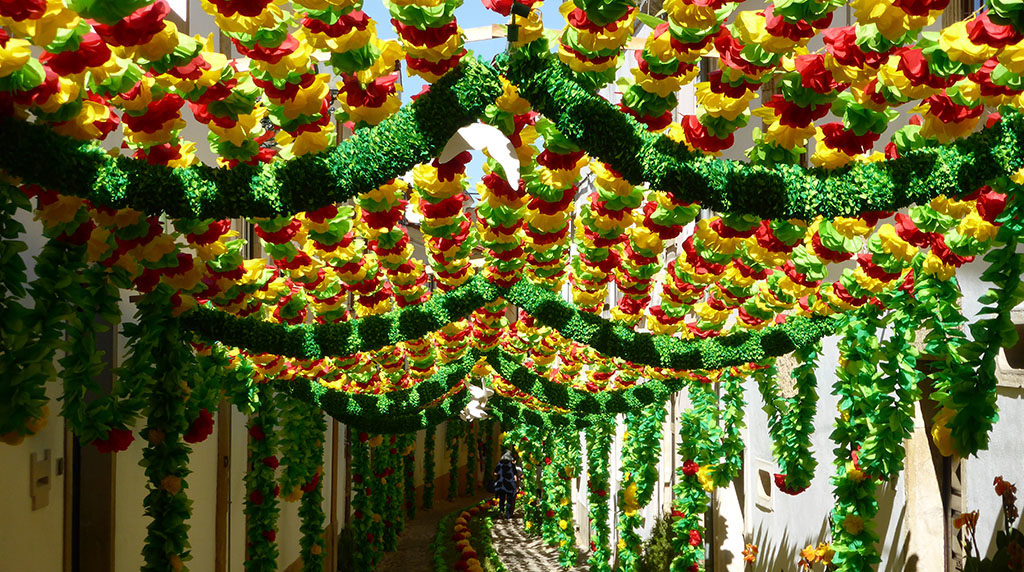Pilgrimage to Saint Marta de Ribarteme, La Romería de Santa Marta de Ribarteme
In Spain, they have many wild and crazy festivals; the most bizarre one takes place in the north of the country. You can buy a leg there and also go for a walk… in a coffin!
Galicia is an autonomous community in the northwest of Spain. The typical wild, rugged coastline, washed by the Atlantic and plagued by winds forms the half of its borders; while the hinterland is green and the forests alternate with the vineyards, where a delicious white Albariño wine is produced.
The capital of the region, Santiago de Compostela, has been a destination of pilgrims from all over the world for centuries. They believe that if they complete the journey to the tomb of St. James in the local cathedral, they will be forgiven of all sins. In the crypt, they bow to his remains, and then kiss the silver mantle of the statue, located above the main altar.
Today the flow of visitors continues, many walk several hundred kilometres, relying only on the help of a walking stick, decorated with a scallop shell, symbol of pilgrims.
However, in Galicia, they maintain many other traditions and festivals; the most morbid takes place on July 29 in the small mountain village of As Neves.
The tiny granite church hidden in the forest is dedicated to Martha, the patron saint of the resurrection and sister of Lazarus, who was brought back from the dead by Jesus. The first mention of the pilgrims who came to ask her for help dates back to 1700, and to this day people from all over Spain gather here in July.
First, they buy a yellow wax model of their sick organ in one of the market stalls. A leg, an arm, a breast, a head, even the whole body; depending on what they have health problems with.
Then they enter the church and stand in line. They patiently wait in order to kiss the statue of St. Martha or stroke her with a handkerchief, which they will later apply on a sick part of the body, hoping to improve its health condition. They give her financial tokens of gratitude as well as a wax model, convinced that like this they are getting rid of their problem too. The atmosphere in the church is suffocating; you can feel pain, hope and despair in the air. And when I saw the coffins leaning against the wall at the back, it shocked me to the core.
Throughout the morning, Masses were held out under the tent and broadcasted outside via loudspeakers, so even those picnicking under the shade of the trees could listen as well. Some people came to participate, others just to watch, but all took the festivity very seriously. Don´t believe what is written on the internet, that it is a cheerful celebration for thousands of tourists - the visitors were mostly Spanish, I met only five foreigners.
When the solemn noon Mass ended, the bells started to ring. First pilgrims showed up at the door of the shrine. Then, the statue of Saint Marta, decorated with flowers and behind her, people on their knees. Pilgrims, asking for health or to be cured, in translucent capes, with candles in their hands. Occasionally, the ringing was interrupted by firecracker displays, the sky filled with colourful flares.
Finally, a bizarre funeral procession, awaited by everybody, appeared.. Those who had near-death experiences during the previous twelve months offer themselves to Saint Martha as a sacrifice for saving their lives. They climb into coffins which are carried by their family or friends. If they come without relatives, they carry their coffins themselves.
The spectators, eager for a frightening experience, got it. If there were no bells, it would be as silent as the grave. The first man in the coffin was covering his face, maybe from the sun, maybe from the thousands pairs of curious eyes. The greenish lady behind him probably took it as a ,,rehearsal” and lay with her eyes closed. The last woman looked sad and unhealthy. Although I was just an observer, my hands with the camera were shaking. Seriously, this was one of the most frightening experiences in my life...
The mournful cortège, chanting ‘Virgin Santa Martha, star of the North, we bring you those who saw death’, slowly headed up the hill to the cemetery, then made a procession throughout the town and returned to the church.
Finally, the active participants of the pilgrimage could celebrate too. They sat down on wooden benches under the trees and had plenty of opportunities to share their experiences about the encounters with death; and how they escaped it. Of course, there was some wine and pulpo a la gallega, Galicia’s signature dish - octopus. Sea monsters were cooked everywhere around in huge copper cauldrons and stank like hell. When they were done, the chefs quickly cut their long tentacles with a scissor, then sprinkled the rings with olive oil and pepper. The meat is very tender and tasty, but to masticate it thoroughly is hard work.
I was so shaken, I preferred to run back to the lively city of Santiago de Compostela and have a big glass of wine...
By the way, there are not only churches in Santiago. In Alameda Park, I found beautiful colourful statues called As dúas Marías, Two Marys. It is said that sisters Maruxa and Coralia, well dressed and with full makeup, in the fifties and sixties used to walk around the city and flirt with students. Their appearance contrasted sharply with the grim mood prevailing under Franco's dictatorship. According to some people, with cheerful clothes they protested against the regime; while others considered them simply crazy. The sculptures were installed in 1994 and from time to time, they change them into new clothes – by painting them with different colours.












